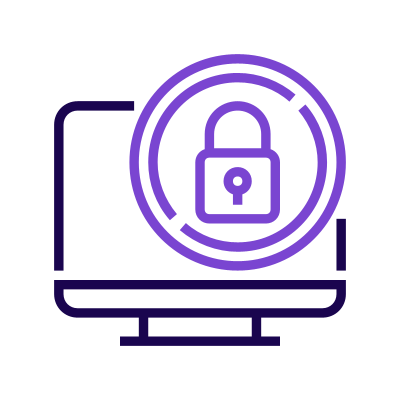Supply chain security is a vital aspect of cybersecurity that is often overlooked. Supply chain security refers to the protection of an organization’s supply chain against cyber threats that can affect the confidentiality, integrity, and availability of the supply chain and its components. As organizations adopt remote work and allow suppliers access to their systems, the supply chain has become an attractive target for cybercriminals. In this article, we will explore the challenges, and key pillars of supply chain security, contextualize the current threat landscape, and discuss the need for a proactive approach to cybersecurity.
Common Supply Chain Security Challenges
Enterprises often focus on securing their own networks and systems, but they may overlook the importance of supply chain security as a crucial aspect of their cybersecurity defense strategy.
Increase complexity: Today’s supply chains are global, interconnected, and often involve multiple third-party vendors.
Lack of visibility: Enterprises may not have a clear view of their supply chain, its associated risks, and the lack of visibility into the security practices of suppliers and subcontractors.
Limited resources: Many enterprises have limited resources and may prioritize other aspects of their business over supply chain security, resulting in a lack of investment in security controls and processes.
Over-reliance on trust: A great deal of trust is placed in their suppliers and subcontractors, assuming that they have adequate security measures in place. However, this can lead to complacency and a lack of due diligence.
Lack of collaboration: Enterprises may not collaborate effectively with their suppliers and subcontractors to manage security risks leading to a lack of information sharing and a failure to coordinate security efforts.
Pillars of Supply Chain and Security Threats They Face
Information technology systems: Critical to managing the supply chain, these systems can include enterprise resource planning (ERP) software, customer relationship management (CRM) systems, and other technology platforms. Cybersecurity threats, such as malware, ransomware, and phishing attacks, can disrupt these systems and compromise sensitive data.
Data management: The supply chain generates and relies on a vast amount of data, including customer information, sales data, and inventory records. It’s essential to protect this data from cybersecurity risks, such as data breaches or unauthorized access, to maintain the integrity of the supply chain.
Supply chain partners: Many supply chains rely on partnerships with third-party vendors, suppliers, and logistics providers. These partners pose cybersecurity risks, as their IT systems and data management processes may not meet the same standards as your own organization.
Operational technology: Besides IT systems, operational technology (OT) systems are also essential to managing the supply chain. OT systems include machinery, sensors, and other devices monitoring and controlling production and logistics processes. Cybersecurity threats to these systems can lead to production disruptions, equipment failures, and safety hazards.
Employees: Employees, particularly through insider threats or inadvertent errors, are an undeniable cybersecurity risk. Training and education programs can help employees understand cybersecurity risks and promote good cyber hygiene practices. A compromise in any one of these pillars has ripple effects for the entire supply chain, leading to widespread disruptions and loss of customer trust, which can be difficult and expensive to recover from.
Let’s Look at Supply Chain Attack Example
In a recent case, ENHALO assisted a high-tech management software vendor supplying a wide range of IoT/OT solutions.

While having some investment in their own organization’s cybersecurity, there was an over-reliance and trust in the cybersecurity investment of the suppliers in the supply chain. One of these suppliers was targeted by attackers who managed to infiltrate the supplier and extract credentials. These usernames and passwords were later used to infiltrate the customer’s office via a secure VPN. Once a single machine was compromised, the attackers moved laterally (computer to computer) and gained access to the critical assets and backups which they had been searching for.
A ransomware attack was launched, which corrupted all backups and server data, crippled the client’s ability to function, and cast a massive cloud over how this could spread to their customers.
Compliance and Regulatory Impact of a Supply Chain Attack
Organizations are legally responsible for reporting cyber attacks to the Information Commission in their relevant regions.
ENHALO SOS assists with this communication by handling the identification, containment, and eradication of the threat and reports writing and communications to the relevant regulatory authorities.
The impact of an attack varies with penalties for negligence and even criminal persecution for not reporting attacks timeously to protect the rest of the supply chain.
The Threat Landscape Needs a Proactive Approach and Collaboration
No business functions without suppliers and suppliers are bound to have some form of integration access to your organization’s systems. But attacks are often difficult to detect because they occur at a point in the chain where security controls are less robust, such as with a small supplier or subcontractor.
Therefore enterprises must look at their Enterprise Continuity Risk (ECR) for potential threats and put Standard Operating Procedures (SOPs) in place for identification, containment, eradication, and stabilization.
The first step is to identify the critical components of their operations and supply chain and understand the potential impact of disruptions to these components. Critical components are those that would cause significant disruption if they were compromised, such as a key supplier or logistics provider. Evaluating the cyber risk of each component in the supply chain includes assessing the level of cybersecurity measures in place, the likelihood of a cyber-attack, and the potential impact of a successful attack on production, delivery, and revenue.
So what should you do to secure third-party supplier access to your network? There is no one quick solution – it requires a combination of policies, tools, and monitoring:
Conduct a risk assessment: Evaluate the security posture of prospective and existing suppliers, which will provide you with vital information to support your decisions to do business with a supplier. And before granting third-party access to your network, conduct a risk assessment to determine the level of risk associated with granting access and implement the appropriate security measures.
Establish a secure access policy: Establish a policy that outlines the requirements and guidelines for third-party access to your network, including details on the type of access granted, the level of access required, and the security controls in place to ensure secure access.
Use secure remote access tools: Provide third-party suppliers with remote access tools that ensure access to your network is encrypted, safe, and, most importantly, can be monitored.
Implement multi-factor authentication: Require third-party suppliers to use multi-factor authentication when accessing your network to provide an additional layer of security beyond just a password.
Monitor network activity: Monitor authentication and network activity to detect any unusual activity or attempts to access your network and identify potential security breaches.
For example, user behaviour should be monitored in real-time with advanced analytics and machine learning algorithms to identify indicators of compromise and alert security teams to isolate the threat. (Any deviations from typical user patterns, such as login times, activity levels, unusual access patterns, data transfers, or authentication requests, can indicate malicious behaviour.)
Conduct regular security assessments: Regularly assess your security protocols and SOP practices to identify potential vulnerability gaps. By continuously evaluating threats against your own systems, assets, and processes and adjusting controls as necessary, you will be in a solid position to mitigate risks and direct your cyber security resources into the most vital areas. ENHALO will help you mitigate these supply chain security blind spot challenges with constant, incremental improvements to strengthen your security posture. Give us a call today.







